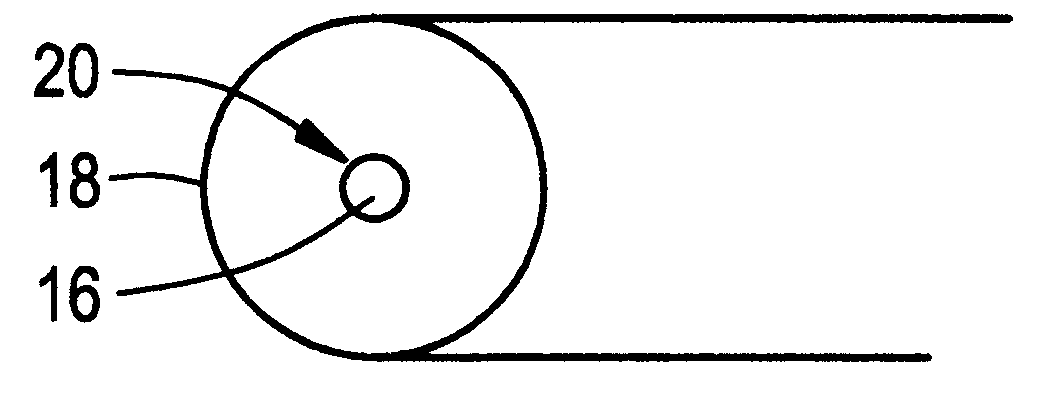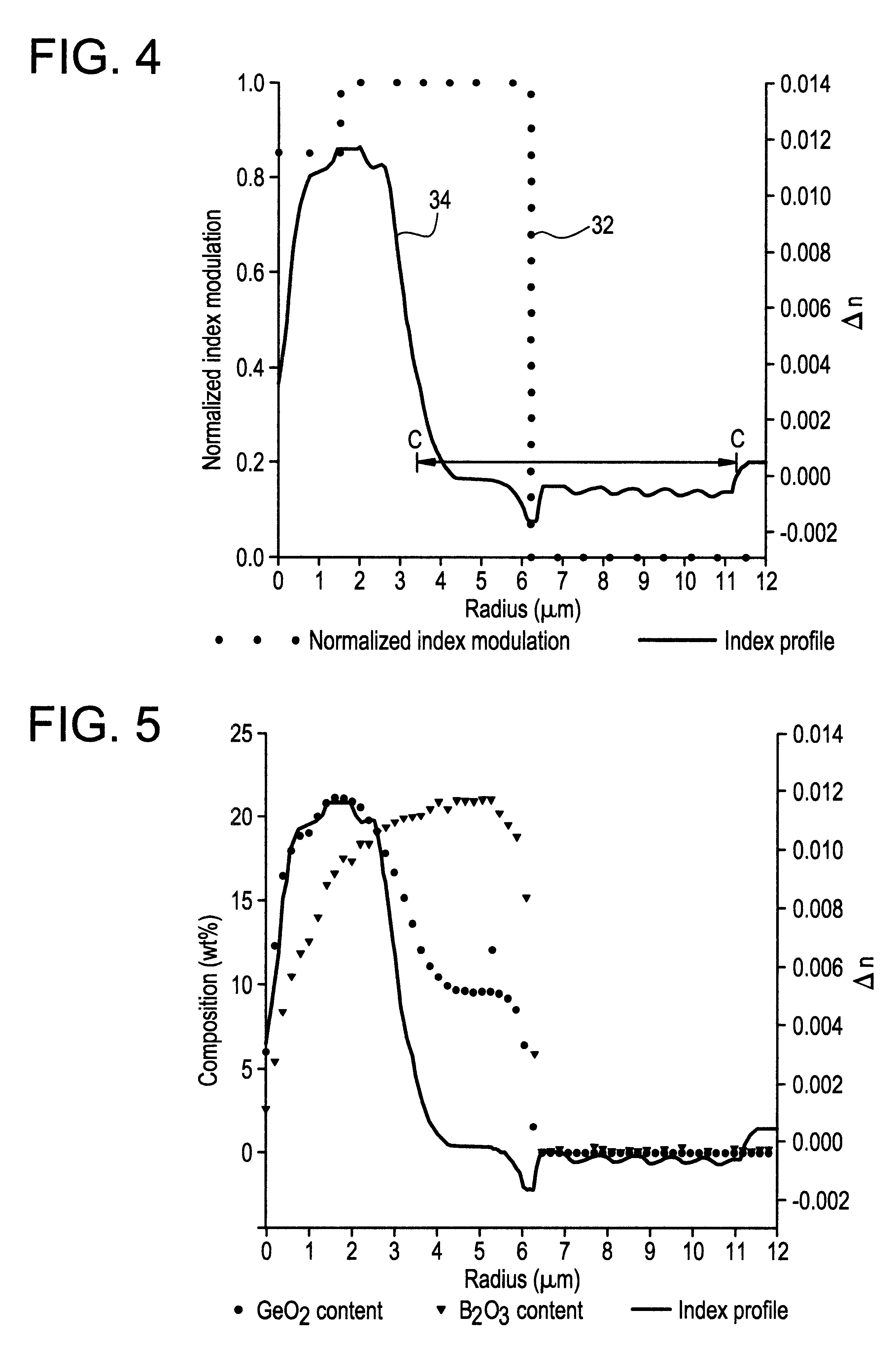Fiber Bragg grating with cladding mode suppression
a fiber bragg grating and suppression technology, applied in the field of fiber bragg gratings, can solve the problems of insufficient application, insufficient and inability to meet the requirements of many applications, and achieve the effect of reducing the loss of splices, and reducing the loss of power coupled into the cladding mod
- Summary
- Abstract
- Description
- Claims
- Application Information
AI Technical Summary
Problems solved by technology
Method used
Image
Examples
Embodiment Construction
The invention will be further clarified by the following example, which is intended to be exemplary of the invention.
A fiber was fabricated. The refractive index of the photosensitive cladding was made to be about the same as that of the rest of the cladding by using a combination of germanium and boron doping. Levels of Ge and B doping as a function of radius are shown in FIG. 5, and given in the following Table:
The invention provides a way to achieve cladding mode coupling loss under 0.1 dB for 30 dB gratings in different fibers, including both hydrogenated and non-hydrogenated fibers. The fiber according to the invention also may be optimized for splicing with a low average splice loss of 0.03 dB to commonly used optical fibers such as the SMF-28.TM. fiber available from Corning Incorporated.
It will be apparent to those skilled in the art that various modifications and variations can be made to the present invention without departing from the spirit and scope of the invention. Th...
PUM
| Property | Measurement | Unit |
|---|---|---|
| wavelength | aaaaa | aaaaa |
| thickness | aaaaa | aaaaa |
| thickness | aaaaa | aaaaa |
Abstract
Description
Claims
Application Information
 Login to View More
Login to View More - R&D
- Intellectual Property
- Life Sciences
- Materials
- Tech Scout
- Unparalleled Data Quality
- Higher Quality Content
- 60% Fewer Hallucinations
Browse by: Latest US Patents, China's latest patents, Technical Efficacy Thesaurus, Application Domain, Technology Topic, Popular Technical Reports.
© 2025 PatSnap. All rights reserved.Legal|Privacy policy|Modern Slavery Act Transparency Statement|Sitemap|About US| Contact US: help@patsnap.com



